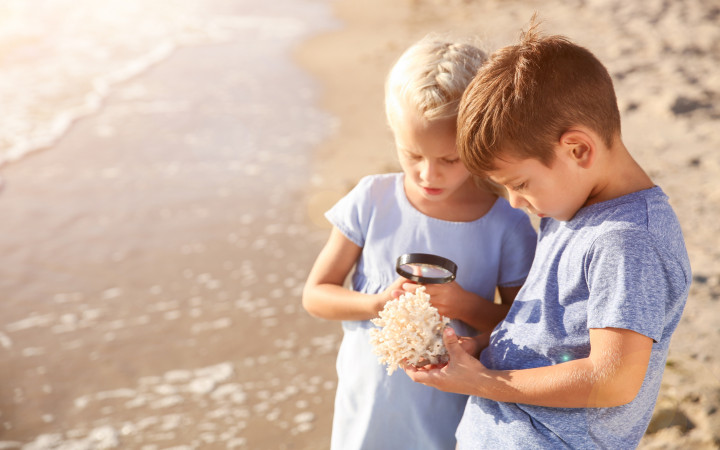Today’s Wonder of the Day was inspired by Eliza. Eliza Wonders, “How were coral polyps made? ” Thanks for WONDERing with us, Eliza!
What’s the most colorful animal under the sea? You might think of jellyfish or nudibranchs. You might even say blue tang or angelfish. But we think today’s Wonder of the Day beats them all. Today we’re talking about one of the ocean’s most colorful animals—coral!
Many people think corals are plants. But they’re actually animals! Plants make their own food, but corals get food from their habitat. That’s why experts say they’re animals. Corals are related to two other colorful marine animals, jellyfish and anemones.
You may have seen coral before in a saltwater fish tank. But nothing compares to the beautiful structures it makes in the open sea. Small groups of corals are called “colonies.” When many coral colonies come together, they make one of the Earth’s most diverse ecosystems: the coral reef.
Coral reefs are home to about 25 percent of sea life. That’s a lot, since they make up less than two percent of the ocean floor. The world’s largest reef—the Great Barrier Reef—holds over 2,000 species. You’ll find fish, sharks, turtles, and many more animals in its 1,200 square miles.
Today, the Great Barrier Reef is so big that it can even be seen from space! But it took about 20,000 years for it to get that large. That’s because corals grow very slowly. Most types of coral grow less than one inch a year.
Speaking of growth, how is coral made, anyway? Coral actually reproduces in a couple of different ways. First, when a coral polyp gets big enough, it can split in two. This makes a second polyp that is a copy of the first one. Coral also grows when polyps send reproductive cells out into the water. These cells come together and form new polyps.
Hard (or stony) coral build coral reefs. Each new polyp has its own skeleton. When these skeletons connect to others, they form coral colonies and reefs. Soft corals don’t have skeletons, but may still live in a coral reef.
If you’ve ever seen pictures of coral reefs, you know they have many vibrant colors. But would you believe that corals actually start out colorless? It’s true! Corals get their colors from algae that live in the reef. They feed on waste from the algae’s photosynthesis. They also eat small fish and plankton that they trap with their tentacles.
Coral reefs are a very important ocean ecosystem. However, Earth’s reefs are in danger. Pollution and climate change threaten their future. Coral bleaching, caused by increased ocean acidity, is also a threat.
If Earth’s coral reefs are wiped out, what will happen to all the animals that live in them? It could spell disaster. Experts worry that the loss of reefs could lead to extinction for much marine life.
Are you WONDERing how you can help save the coral reefs? Experts suggest conserving water and keeping shorelines clean. It’s also important to recycle and practice responsible fishing. Coral reefs are very important to life in Earth’s oceans. Many people are working hard to help them.
Would you like to explore a coral reef one day? We hope you get to! Maybe you’ll even find a whole new species of plant or animal there! There’s no other place on Earth quite as colorful and diverse as a coral reef.
Standards: NGSS.LS1.A, NGSS.LS1.B, NGSS.LS1.C, NGSS.LS1.D, NGSS.LS2.C, NGSS.LS2.D, NGSS.LS4.A, NGSS.LS4.C, NGSS.ESS3.C, CCRA.L.3, CCRA.L.6, CCRA.R.4 , CCRA.R.10, CCRA.SL.1, CCRA.SL.2, CCRA.W.3, CCRA.L.1, CCRA.L.2




